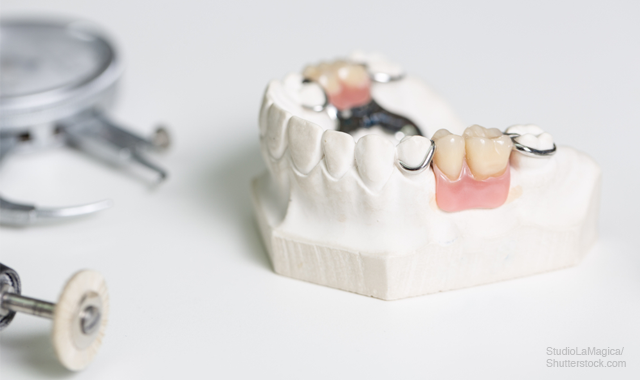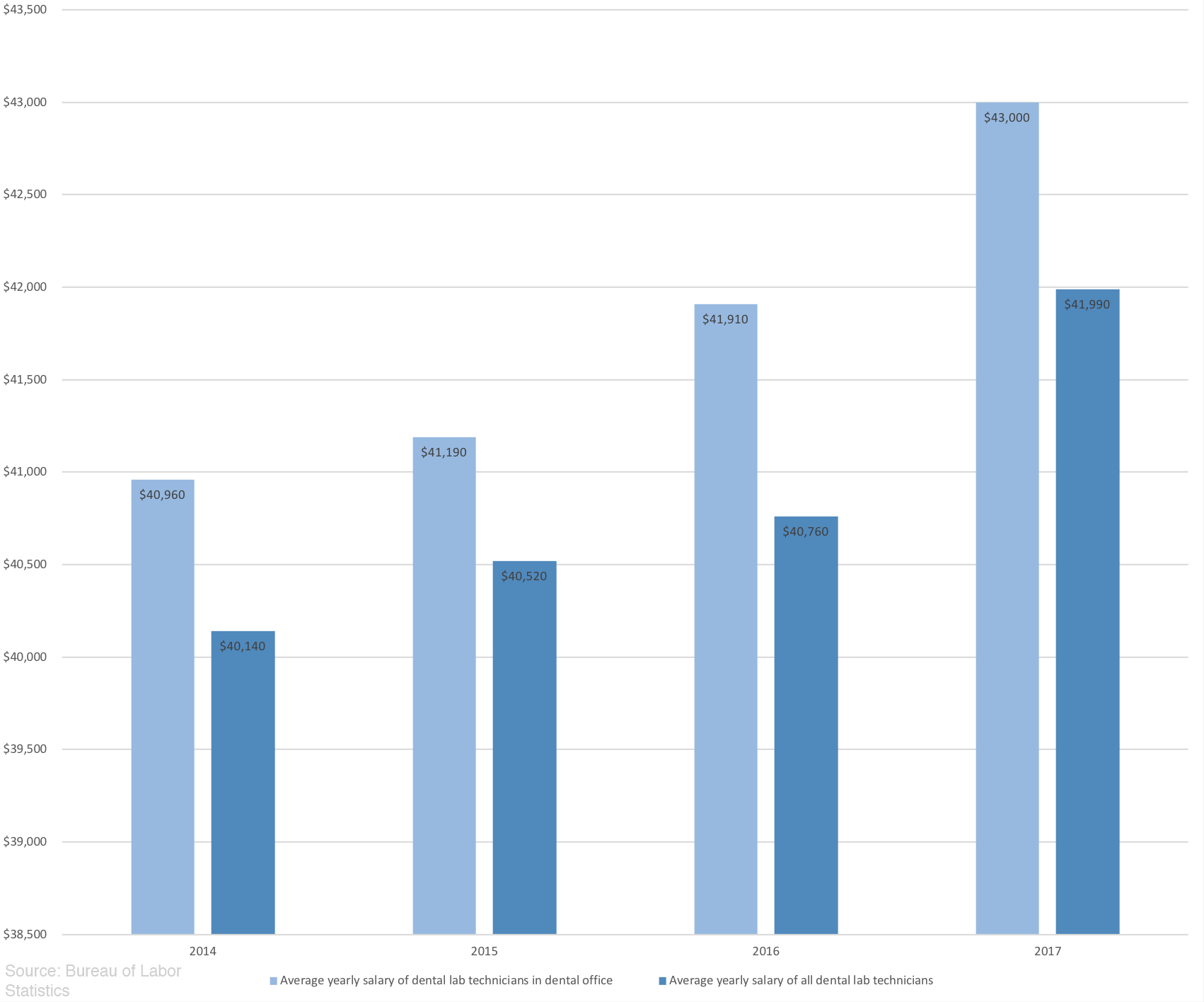Why you should become an in-office technician
An in-office dental lab technician benefits everyone in the dental practice, from patient to doctor to the technician.

Dental labs, like so many other parts of the dental world, are rapidly going through changes.
From cutting-edge digital design to the growing accessibility of chairside fabrication, the lines between lab and office are quickly becoming blurred. But one thing is still clear: Technicians will always be the experts when it comes to dental fabrication.
As labs and offices move closer together - and as both become increasingly complex - many clinicians and technicians have realized that the key to success is to draw closer together. For some, this looks like increased collaboration through the process of digital impressions and case design, commenting and tweaking cases well before fabrication.
Related article: The state of dental technology in 2018
For a small - but growing - number of technicians and clinicians, the easiest way to collaborate is to join forces in a single office. These in-office technicians work side-by-side with dentists, allowing for seamless collaboration all the way from patient to fabrication.
Michael T. Morris, CDT, FAACD, is an in-office dental lab technician in Lexington, Kentucky-based Arnold Dental. He sums up his experiences working in an office this way: “better than I could have imagined.” For Morris and many others, in-office work offers a variety of benefits and optimizations not found elsewhere.
The numbers
According to the National Association of Dental Laboratories (NADL), the number of technicians moving into dental offices has slowly increased over the last few years.
In 2016, five percent of the technicians NADL surveyed worked in a dental office. In 2017, that number increased to 6.2 percent, while in 2018 it jumped up to 6.7 percent of technicians. Additionally, nearly one in ten (9.3 percent) small labs (those with between one and nine employees), were located in a dental office in 2018. This is up from 7.8 percent in 2017 and 5.6 percent, indicating that small labs are making the move to the dental office.
Obviously, those numbers represent are relatively small when compared to the overall number of technicians. However, the data indicate that more and more technicians and practice owners see this as a mutually beneficial relationship.

At the same time, the number of dental lab technicians in the country has been shrinking for years. In 2015, according to the Bureau of Labor Statistics (BLS), there were 37,520 technicians. In 2017, the most recent year available, that number dropped to 35,630. The growing number of in-office technicians may just be a simple reflection of the need for lab technicians to define their value in an increasingly competitive market - but that doesn’t mean there aren’t a number of benefits to the arrangement.
The benefits of the in-office lab
One big reason technicians might be moving to offices is perhaps the most obvious: money. On average, technicians in offices make nearly $1,000 more per year than the average dental lab technician. In 2017, according to the BLS, technicians working in offices earned $43,000 compared to dental technicians as a whole, who earned $41,990 (Fig. 1). While only an increase of about 2.5 percent, the lure of bigger paycheck could be an attractive option for technicians struggling with low wages.
Money is certainly one reason why technicians might consider moving, but technicians can benefit in other ways as well.
Perhaps the most unique part of operating in-office is the ability for technicians to work directly with patients. “Working closely with patients and getting to see results firsthand is my favorite aspect of working in house. I see patients all through their treatment process,” says Morris. He appreciates the ability to meet with patients during pre-treatment record appointments, where he can then share his perspective the patient - a process he says is much more personal than if he were off-site.
Trending article: 6 materials lab techs need to know about
In-office technicians also have greater access to doctors than they would working offsite. Rather than having to rely on email or having to send cases back and forth for corrections, technicians can work directly with the doctor to get it right quickly and more accurately. After all, nearly 65 percent of all impressions sent to labs are faulty - working directly with the doctor can take some of the technician’s guess work out of the picture.
“I think I add the most value to the patient and Doctor,” says Morris, “by seeing the patients during the placement of their restorations, where I'm able to make changes and adjustments at the request of the Doctor and the patient.” Those finishing touches, he adds, “make all the difference for success.”
Steven Goldstein, DDS, a dentist based in Scottsdale, Arizona, says that working as a dentist-technician team benefits everyone involved: doctor, technician and patient. The best part of working with an in-office technician, he says, is the ability to work with the technician “daily to make critical decisions regarding case design, esthetics, materials, etc.”
The move to offices is also a practical one. The march of new innovations added into dental offices is meant to remove the lab middleman, but may actually be leading to an increased reliance on the technician’s expertise.
“I think the move for more in house technicians in recent years can be attributed to the digital movement in dentistry.” says Morris, “Dental offices are becoming their own laboratory through purchasing current digital equipment and are realizing the need to employ the skill of dental technicians to manage their in-house lab and digital equipment for all restorations to be completed onsite.”
Related article: How the digital revolution is making an impact on implant treatment
In-house labs are not, however, free from problems. Morris says that his biggest challenge is handling workload and managing a consistent workflow for his in-house work while also doing outside work. Scheduling and communicating about deadlines, he says, is a must. But even then, when it gets tough he has no choice but to work more hours to get everything done.
Dentists also feel some constraints with the setup. Goldstein’s office, as of 2014, no longer has a full-time technician. The biggest issue he had with an in-house technician was the lack of opportunity to consult other experts for specific cases.
Since then, Goldstein says that he does much of his office’s lab work himself, doing as much or as little as he wants. He still maintains a fully-functional lab with available current technologies. For tougher cases beyond his comfort level, he brings in outside technicians from other local labs into his office. Those technicians can still work directly with patients, making adjustments or modifications as needed. This gives him the flexibility to consult with experts while still also gaining all the benefits of having the technician in-house.
Related article: Our 6 favorite digital techniques
Morris is full-time technician in his office, but his office still hands off cases to more specialized labs when required. He mainly handles cosmetic smile design and anterior tooth matching cases, mostly using analog techniques in his day-to-day work. For cases requiring a digital touch, such as some implant abutments and zirconia work, he utilizes the help of an outside lab to digitize his analog designs.
Conclusion
An in-office dental lab technician can make a lot of sense for everyone in the dental office. Technicians in an office lab can count on higher pay and greater job satisfaction. For dentists, it takes the pressure of having to master lab equipment in addition to all the other new technologies quickly changing the dental landscape. And for patients, it means less disruption and better designs.
Episode 31: Dentsply Sirona Implant Announcements
September 30th 2021DPR’s Editorial Director Noah Levine sat down with Gene Dorff, Dentsply Sirona’s group vice president of implants and Dr. Dan Butterman to review several big announcements the company made in the arena of implants during Dentsply Sirona World 2021 in Las Vegas.
Oral Health Pavilion at HLTH 2024 Highlighted Links Between Dental and General Health
November 4th 2024At HLTH 2024, CareQuest, Colgate-Palmolive, Henry Schein, and PDS Health launched an Oral Health Pavilion to showcase how integrating oral and general health can improve patient outcomes and reduce costs.